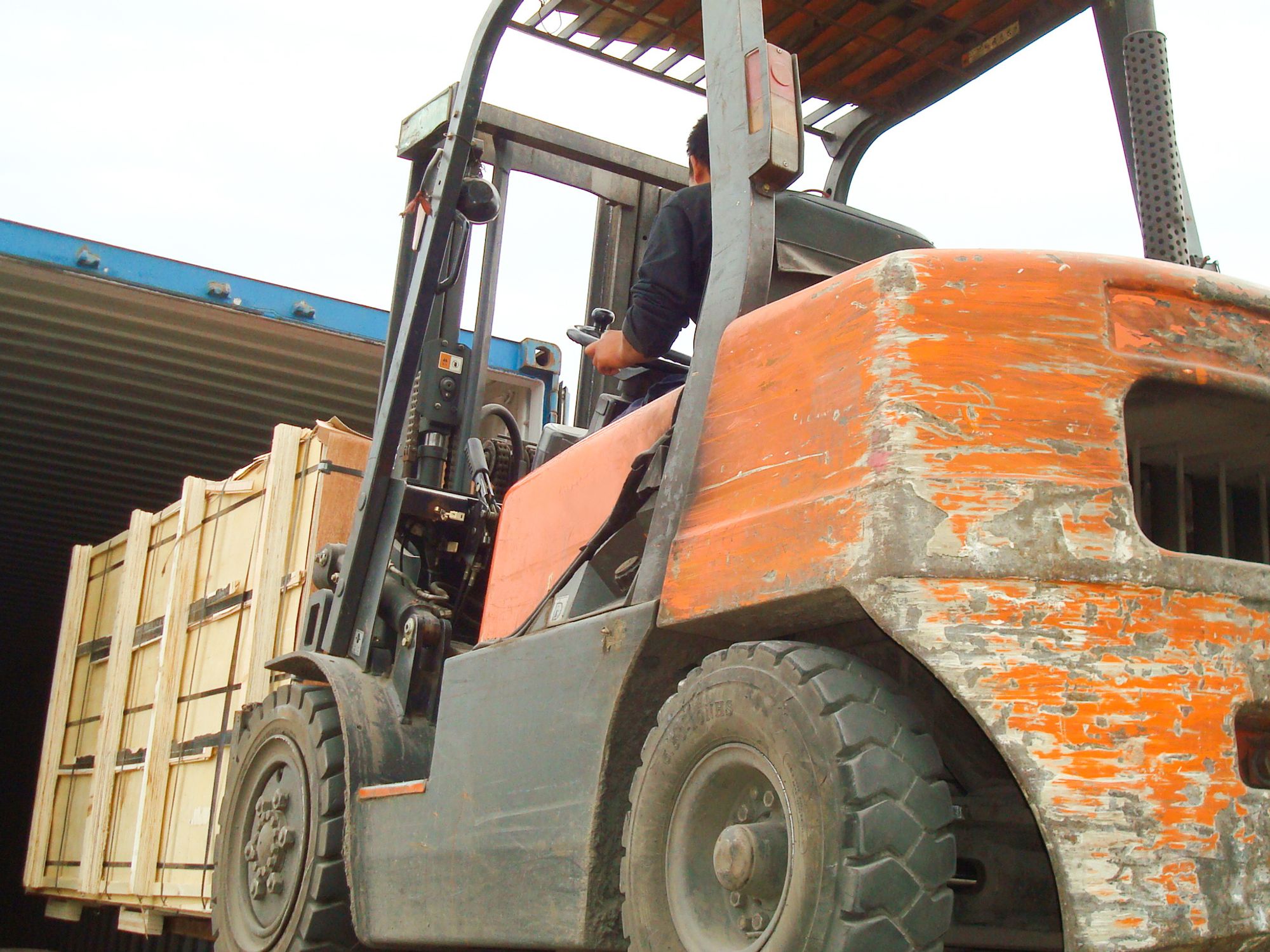Stability

- The three-point support system on counterbalanced PITs forms a stability triangle.
- To avoid tipping, a PIT must achieve longitudinal, lateral, and dynamic stability.
Stability triangle
Almost all counterbalanced PITs have a three-point suspension system, meaning the vehicle is supported at three points. This is true even if the vehicle has four wheels. The truck’s steer axle is attached to the truck by a pivot pin in the axle’s center. When the points are connected by imaginary lines, this three-point support forms a triangle called the stability triangle.
Longitudinal stability
The axis of rotation when a truck tips forward is the front wheels’ points of contact with the pavement. When PITs tip forward, the truck will rotate about this line. When a truck is stable, the vehicle moment must exceed the load-moment. As long as the vehicle-moment is equal to or exceeds the load-moment, the vehicle will not tip over. On the other hand, if the load-moment slightly exceeds the vehicle-moment, the truck will begin to tip forward, thereby causing the rear to lose contact with the floor or ground and result in loss of steering control. If the load-moment greatly exceeds the vehicle-moment, the truck will tip forward.
To determine the maximum safe load-moment, the truck manufacturer normally rates the truck at a maximum load at a given distance from the front face of the forks. The specified distance from the front face of the forks to the line of action of the load is the load center.
Because larger trucks normally handle loads that are physically larger, these vehicles have greater load centers. Trucks with a capacity of 30,000 pounds or less are normally rated at a given load weight at a 24-inch load center. Trucks with a capacity greater than 30,000 pounds are normally rated at a given load weight at a 36- or 48-inch load center. To safely operate the vehicle, the operator should always check the data plate to determine the maximum allowable weight at the rated load center.
Although the true load-moment distance is measured from the front wheels, this distance is greater than the distance from the front face of the forks. Calculating the maximum allowable load-moment using the load-center distance always provides a lower load moment than the truck was designed to handle.
When handling unusual loads, such as those that are larger than 48 inches long (the center of gravity is greater than 24 inches) or that have an offset center of gravity, etc., a maximum allowable load moment should be calculated and used to determine whether a load can be safely handled. For example, if an operator is operating a 3,000-pound capacity truck (with a 24-inch load center), the maximum allowable load-moment is 72,000 inch-pounds (3,000 times 24). If a load is 60 inches long (30-inch load center), then the maximum that this load can weigh is 2,400 pounds (72,000 divided by 30).
Lateral stability
The vehicle’s lateral stability is determined by the line of action’s position relative to the stability triangle. When the vehicle is not loaded, the truck’s center of gravity location is the only factor to be considered in determining the truck’s stability. As long as the line of action of the combined vehicle and load’s center of gravity falls within the stability triangle, the truck is stable and will not tip over. However, if the line of action falls outside the stability triangle, the truck is not stable and may tip over.
Factors that affect the vehicle’s lateral stability include the load’s placement on the truck, the height of the load above the surface on which the vehicle is operating, and the vehicle’s degree of lean.
Dynamic stability
The stability of a PIT is further complicated by dynamic forces that result when the vehicle and load are put into motion. The weight’s transfer and the resulting shift in the center of gravity due to the dynamic forces created when the machine is moving, braking, cornering, lifting, tilting, and lowering loads, etc., are important stability considerations.
When determining whether a load can be safely handled, the operator should exercise extra caution with loads that cause the vehicle to approach its maximum design characteristics. For example, if an operator must handle a maximum load, the load should be carried at the lowest position possible, the truck should be accelerated slowly and evenly, and the forks should be tilted forward cautiously. However, no precise rules can be formulated to cover all of these eventualities.
